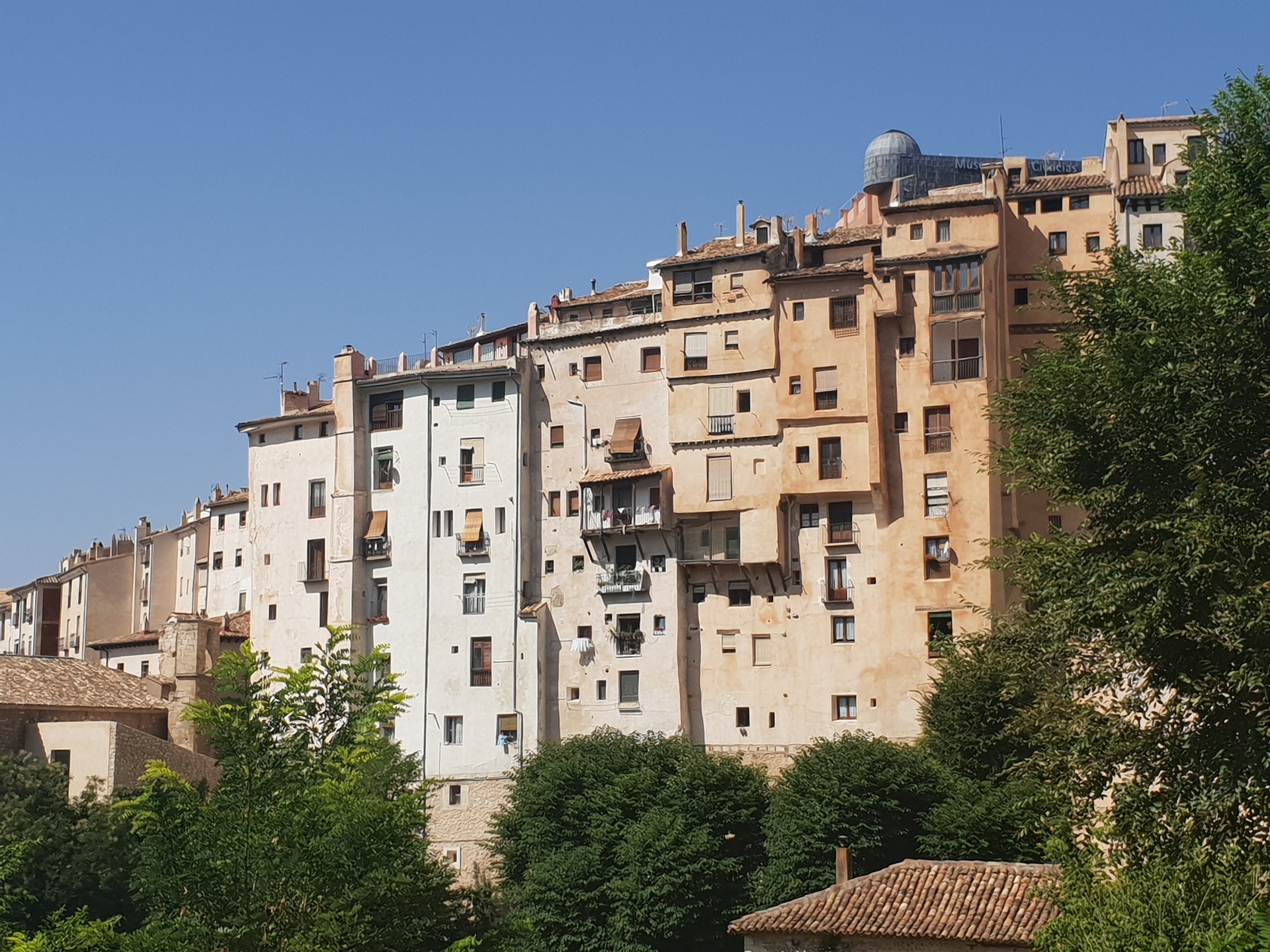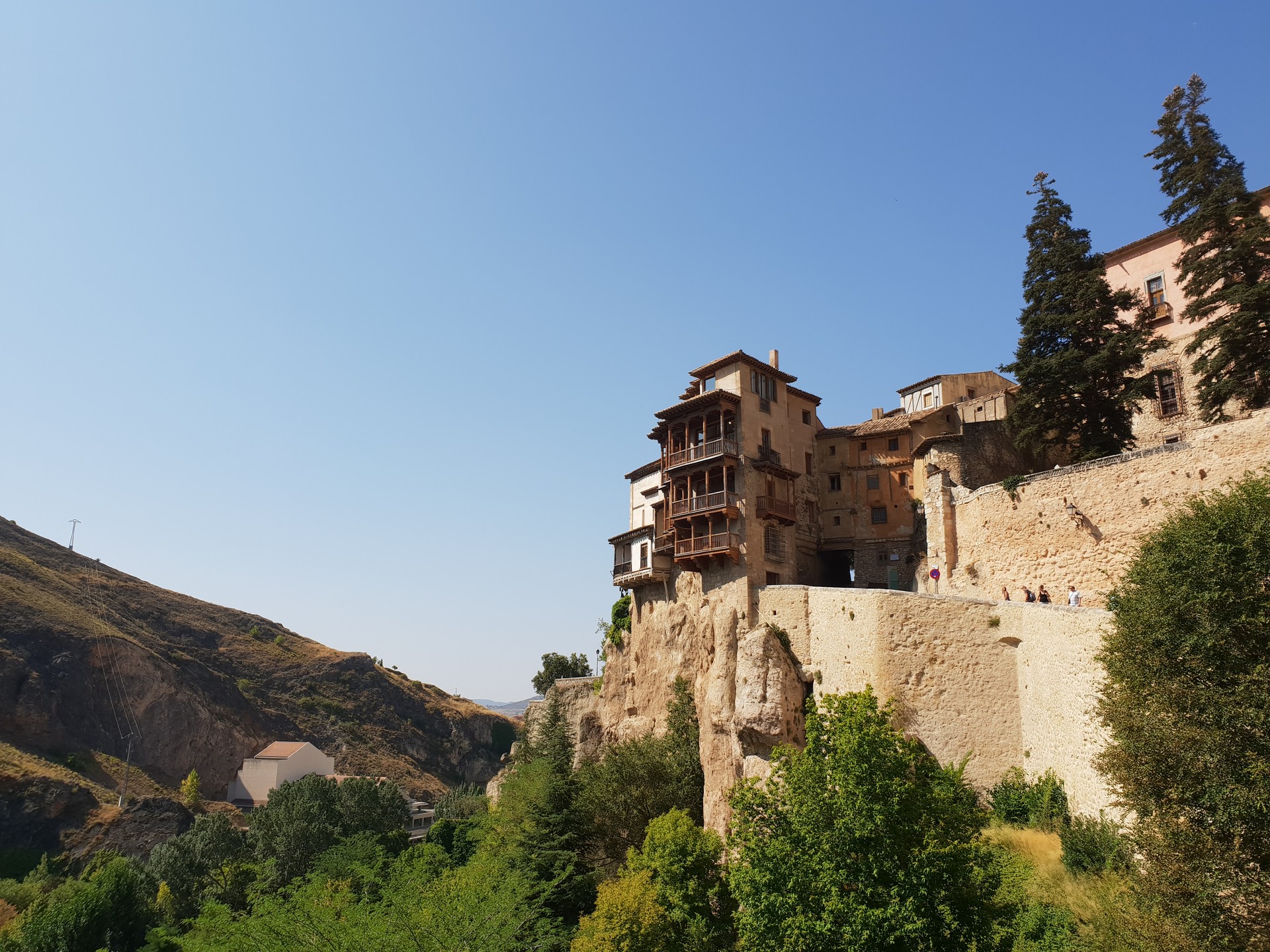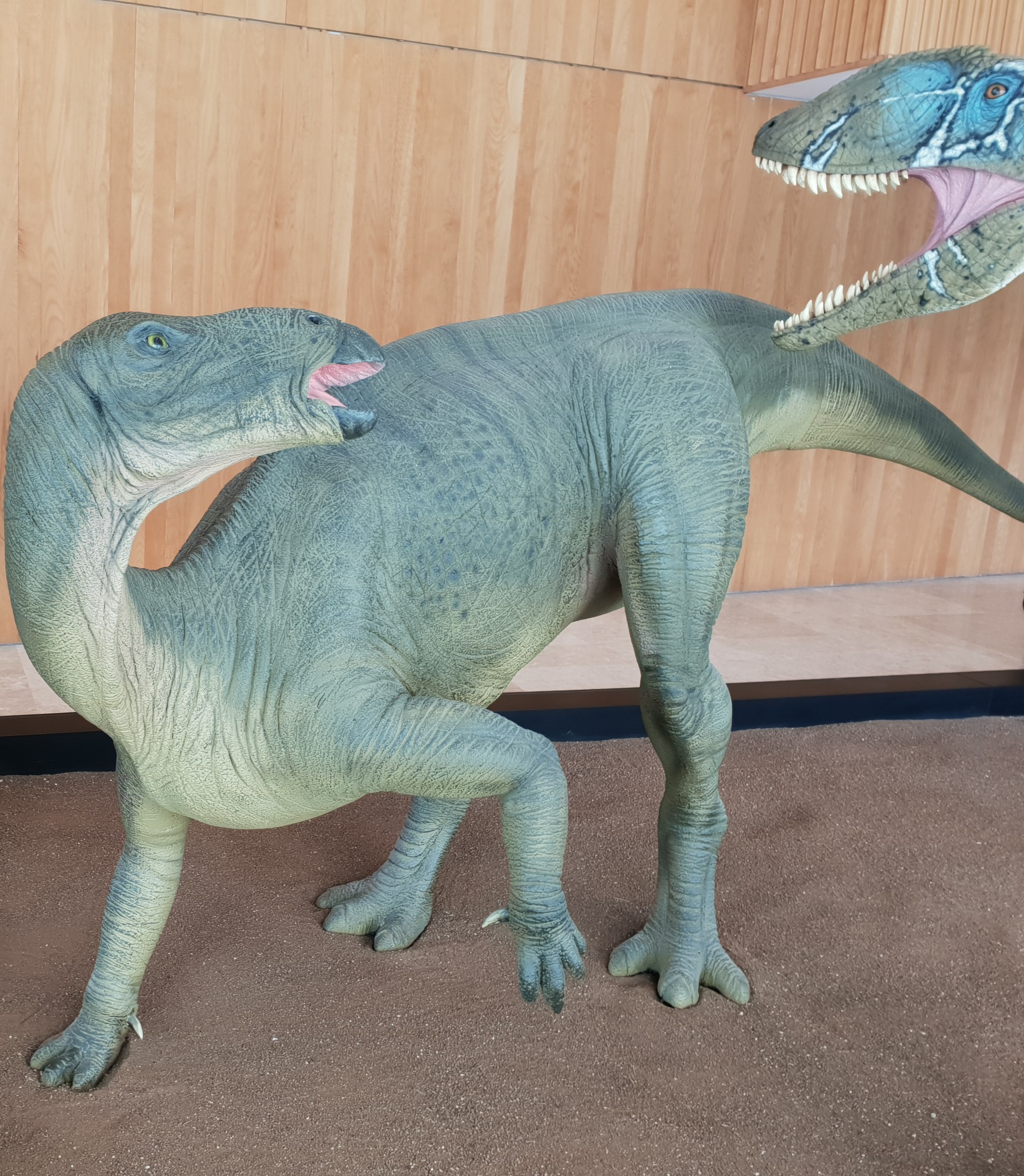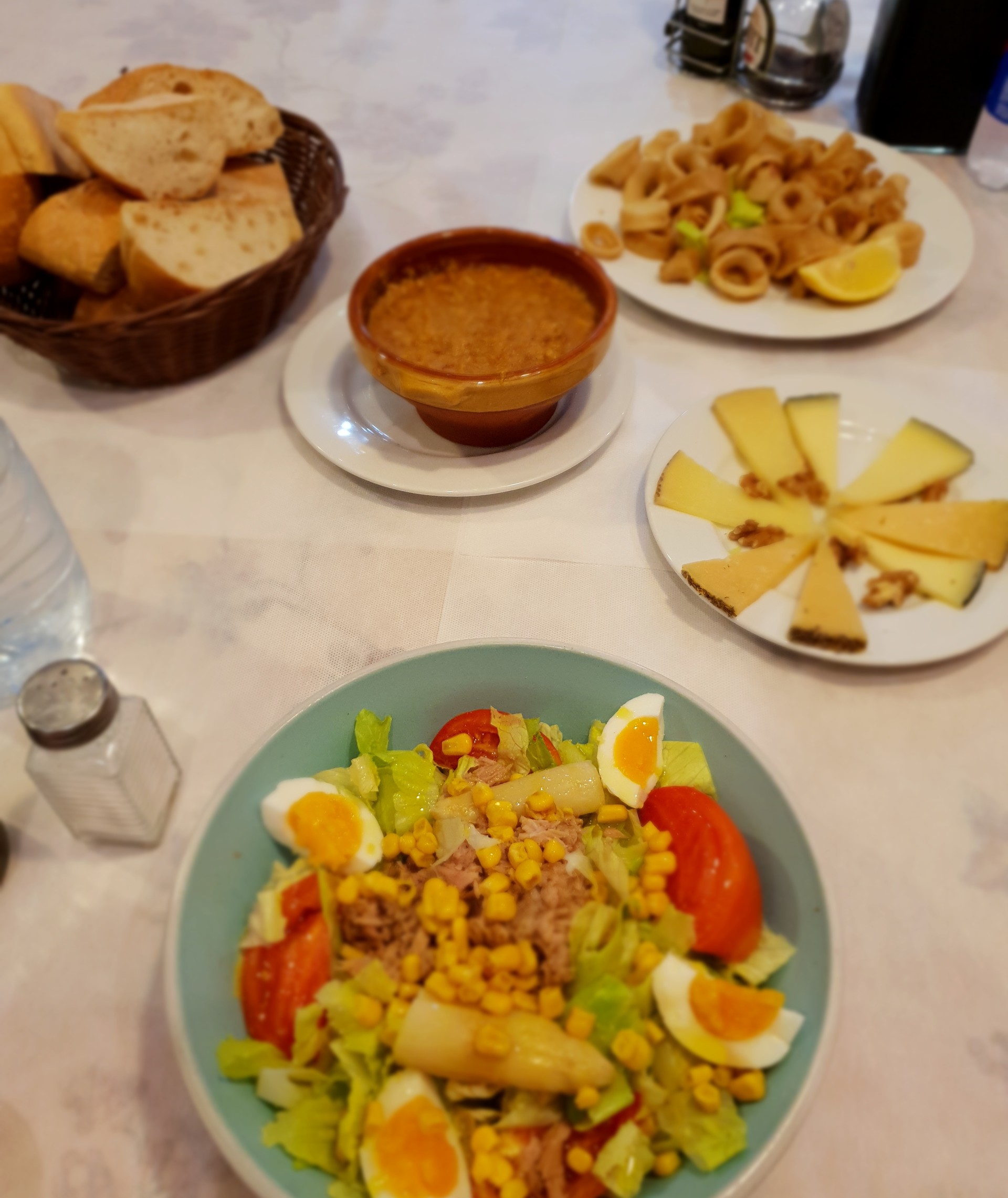Discovering Cuenca
Hello Erasmus travellers!
I would like to tell you about my experience in a Spanish city that I had to opportunity to get to know a few days ago. I'm talking about the city of Cuenca.
Cuenca is situated in the mid-East of Spain and belongs to the autonomous community of Castilla-La Mancha. It's a small city, with something like a bit more than 55, 000 inhabitants.
I had wanted to visit this city for a long time, and it's very well-known for its main tourist attraction: the hanging houses.
I had always imagined that this city would be pretty, but as always, until you see something with your own eyes you can never know. On this occasion, I have to say that this is a city that surprises you a lot.

To begin, Cuenca is a city that's very different to other cities in Spain. Its irregular design and steep streets, its very peculiar natural environment and interesting buildings, and many other things. All of these things that come together make Cuenca a beautiful city, and above all, different. I think that everyone should visit Cuenca at least once. Like I've said, it's known for its tourism, but we can't say that it's one of the biggest destinations in the country. But, I think it's better this way as it's still unknown for many people.
I will tell you a little bit about the places you can visit in the city. There are a lot of things to see, although it's true that even in one day you can give yourself enough time to see everything.
We have to start with the hanging houses, because as I've said, it's what the city is most famous for. You're probably asking what they are exactly, although you can also find hanging houses in other cities and each ones will have their own peculiarities.
In Cuenca's case, this is where the city was constructed. It's has a mountainous and rocky landscape located in the gorges between the river Júcar and the river Huécar. This is why some of the houses in Cuenca are named after it. Their balconies tower over the heights of the precipice, creating a very intriguing image and giving the city a very pretty feature.

Together with them, and in turn being the best place to see them from, is the San Pablo Bridge, which is also an iconic aspect of the city and one of the preferred touristic places of interest. It's a beautiful and exciting place. This unites the hanging houses with the national parador (a luxury hotel), a building which is also one of the points of interest to visit in the city.
Another of these places that we mustn't forget during our visit is the Plaza Mayor. Here you'll find the Cathedral, one of the first Gothic style cathedrals in Spain, and other interesting buildings too. Its a very joyful place with a good atmosphere, and its colour will surprise you.
You'll also be able to include a trip to the Mangana Tower, and the Cristo de Pasadizo. This last place is very strange. Although it gives a curious image in itself, the most striking aspect it its story or legend. You'll be able to read it right there. Personally I loved getting to know this place, you'll find it in the small streets of Cuenca without difficulty. And, it's worth it.

Another of the essential places to visit in Cuenca is the Barrio del Castillo. Although we can only see some ruins of the castle, they have converted the space into one of the most famous and spectacular viewpoints of the city.
Next I will talk about another type of very interesting feature that this city has, its museums. If there was something that surprised me the most about Cuenca, it would have to be the huge quantity of museums that it has. I'm going to talk to you about this, although I'm not sure if I'll forget some:
-Castilla La Mancha Museum of Sciences: This is situated right in the middle of the historic centre and it's one of the most famous museums in the city. I had the opportunity to visit it and it has exhibitions about things such as astronomy and renewable energy. The best part is the interactive bit where you learn through enjoyable means.
- Museum of Abstract Art: This is also a famous museum in the city, and it's located in the hanging houses. You can find the collection by Fernando Zóbel in this museum, although there are other works by many more artists too.
- Archaeological Museum of Cuenca: In this museum you can find archaeological remains from all over the province which shows the history of Cuenca through the ages.
- Treasure of the Cathedral: This is part of your visit to the Cathedral of Cuenca, and in it you can find different works of art that are related to the Church.
- Espacio Torner: This is one of the best known museums in the city as it harbours works by the artist Gustavo Torner, who comes from Cuenca. Additionally, another reason for the fame of this exposition is where it's located. It can be found in the old Church of San Pablo, a very characteristic spot.
- Antonio Pérez Foundation: Also situated inside a historical building, an old convent in this case, this museum houses different types of works of art made by Antonio Pérez.
- The Easter Museum: You can't forget that this city has a museum dedicated to one of its biggest events, Easter. This Cuencan celebration is one of the most important in Spain, as the city of Cuenca and its history inevitably go hand in hand with Easter, and this exposition is a way of getting to know more about it.
- Casa Zavala: This is a museum house. This palacial building was purchased by the architect Juan de Zavala, who made the choice to donate the building and its objects and art it had inside, which is what they did after his death.
- Espacio Cuarto Maravillas: Situated in the historical centre of the city and inspired by the ancient wonder rooms that exhibited objects found by travellers. It has interesting and diverse seasonal expositions.
- The García and Chico Foundation: Also located in the old town of Cuenca, it has a collection from two artist who produced their works predominantly in this city.
- Museum of Paleontology, Castilla-La Mancha: Although I have left this museum until last in this list of museums I know, that doesn't mean that this one carries any less importance. In fact, this one's my favourite. It dedicates itself to the evolution of living beings on our planet. It has fossils, and especially dinosaurs. It's a very interesting place, with some extraordinary open air gardens.

I can't finish telling you about my experience in Cuenca without talking about the food. This is a great city for trying traditional dishes. So, make the most of it and go into any restaurant or any of the shops that sell traditional products. I'm going to mention some of them:

- Morteruelo: This traditional stew from the area is a sort of paste with pig liver and products from small game hunting. Although perhaps this doesn't sound like the most attractive or appetising dish, I really advise you to try it. It has a very smooth taste and it surprised me in the most positive way.
- Zarajos: This is a traditional aperitif from Cuenca, although I have to say that I didn't personally try these. These are made with pig intestines marinated in milk.
- Migas with egg: This is another of the most traditional dishes that you can find many variants of depending on where you are in Spain. It's predominantly made with dried bread, egg, garlic, oil, water and salt.
- Alajú: One of my favourite dishes from Cuenca. This sweet treat is like a cake made with almonds and honey amongst other ingredients. You could say that it looks a little bit like nougat, but it's blander and sweeter.
Although these are some examples, there is plenty more. I hope that you're able to discover them for yourselves, and that you also enjoy the hidden corners of this very original city.
Photo gallery
Content available in other languages
- Español: Descubriendo Cuenca
Share your Erasmus Experience in Cuenca!
If you know Cuenca as native, traveler or as exchange student... share your opinion on Cuenca! Rate different characteristics and share your experience.
Add experience →




















Comments (0 comments)